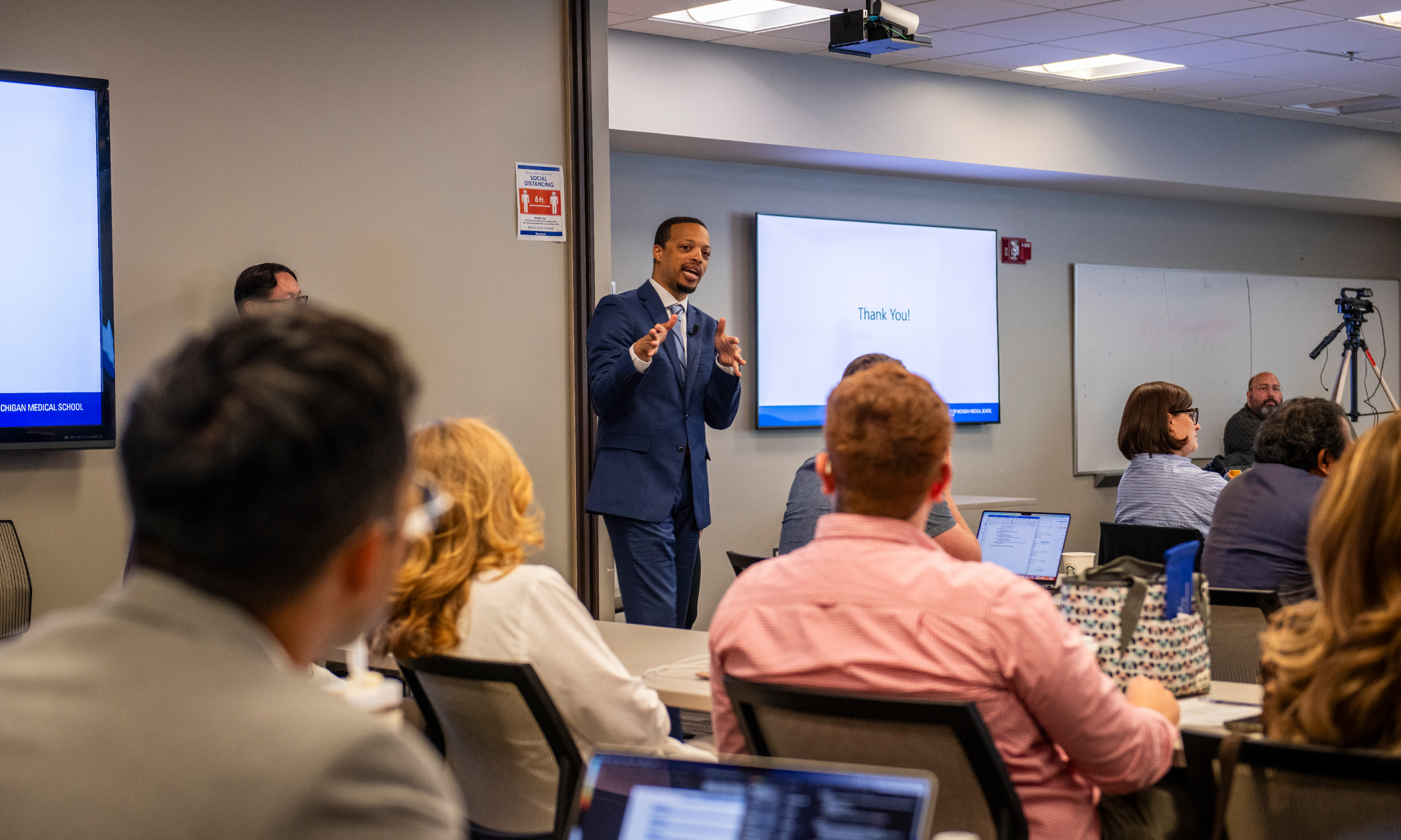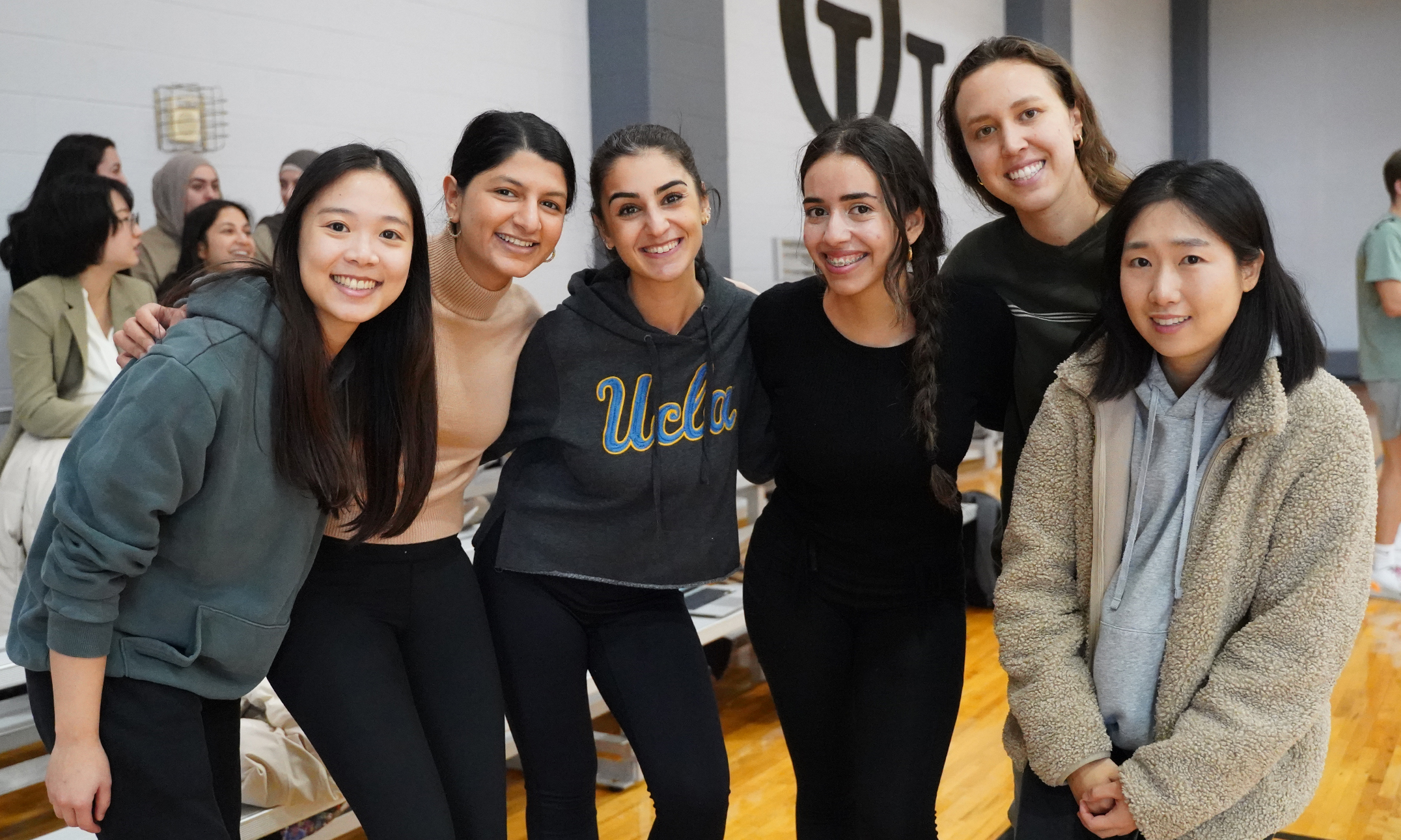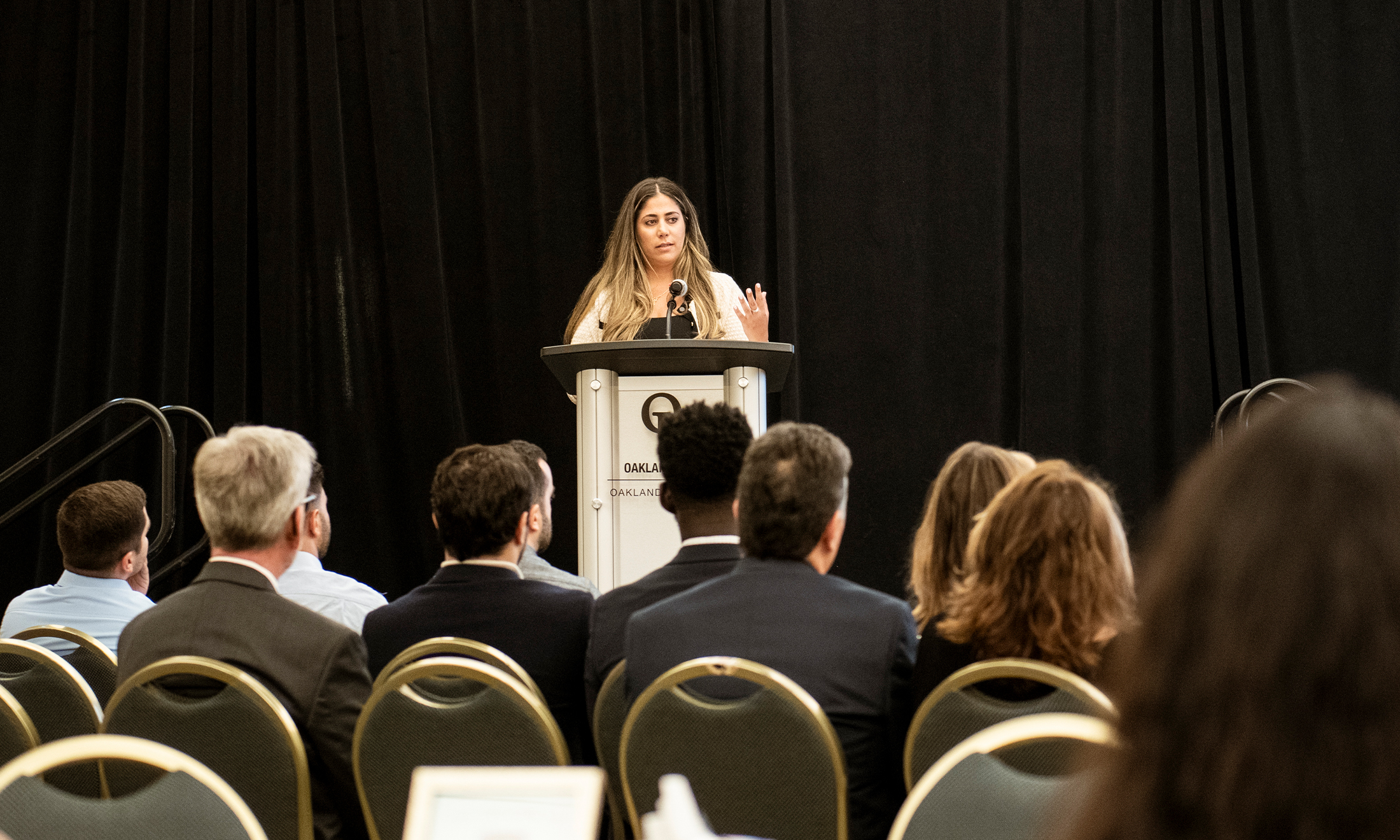‘Better than a screen’
OUWB med students lead brain dissection event for local high school students
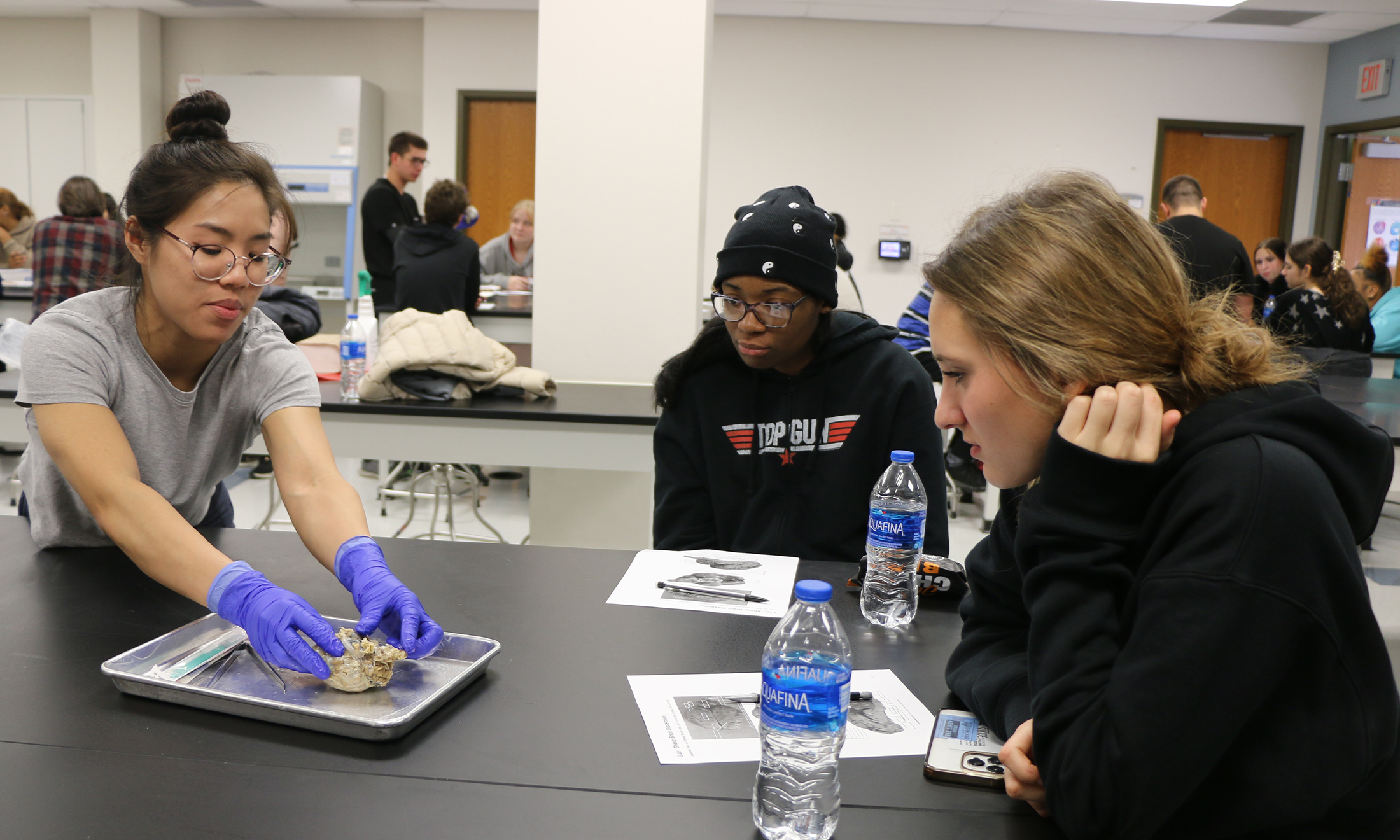
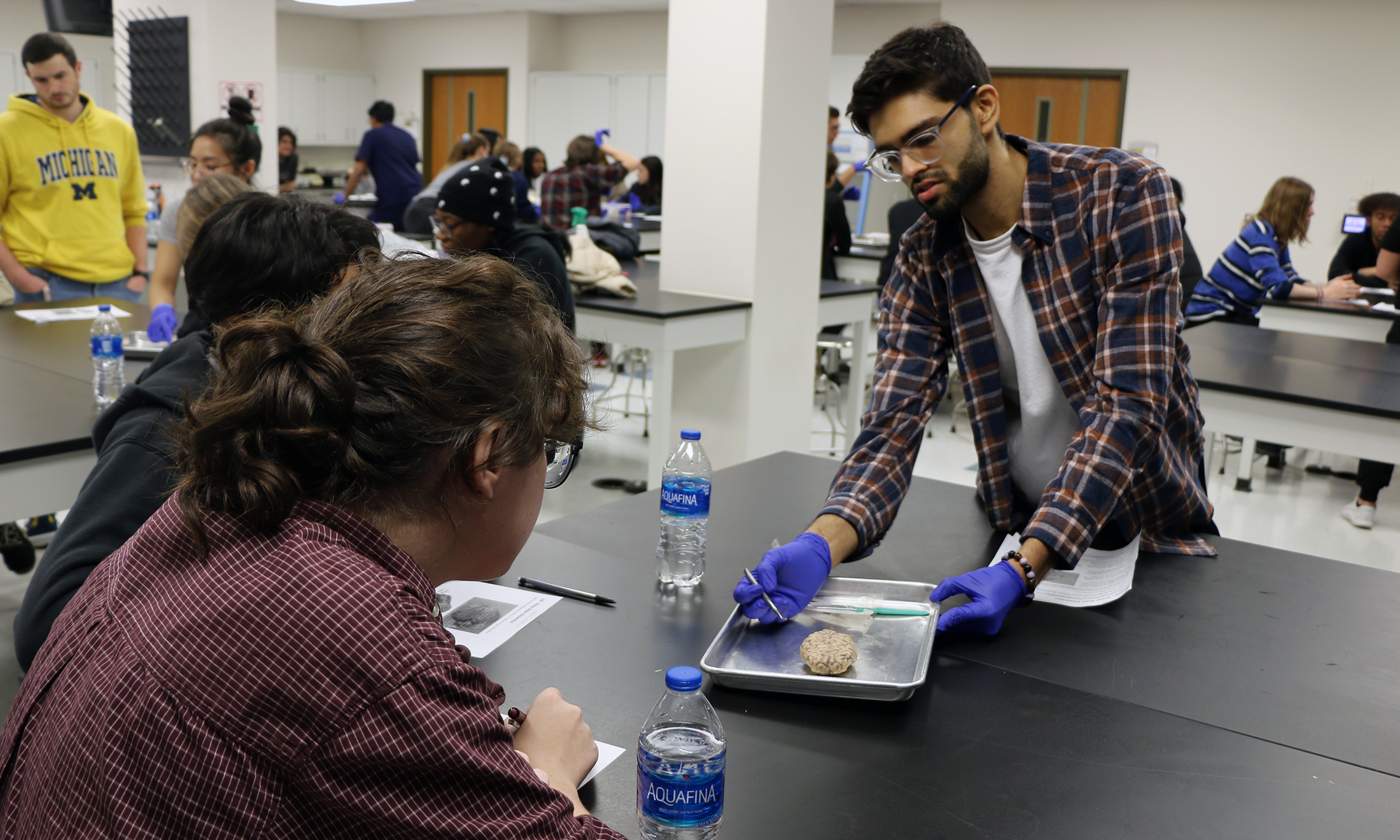
Nearly 50 local high school students recently visited the campus of Oakland University for an engaging educational experience that centered on dissection of sheep brains.
The event was led by two student organizations from Oakland University William Beaumont School of Medicine – Student Interest Group in Neurology (SIGN) and American Academy of Neurological Surgeons. It was possible through a grant from OUWB’s Compass department.
The high school students were from Avondale High School.
It was the first time the event has been held in-person since March 2020, and the return of the event was a good thing, said Alex Hartley, a science teacher at Avondale.
“Neuroscience tends to be the most engaging unit for students, and hearing it from people who are living these experiences is more meaningful than just me standing there and talking to them about why they should be there,” he said. “We can show them the application of why we learn what we learn, instead of just learning this.”
“It’s so much better than looking at a picture on the screen,” said Zero Huffman, a junior at Avondale.
“It’s more engaging, actually getting to see it.”
A starting point
The day began with a lunch and a presentation on neuroscience pathology in O’Dowd Hall with Joseph Fullmer, M.D., Ph.D., neuropathologist and assistant professor, Department of Pathology, OUWB. Afterwards, students walked over to Hannah Hall, donned their disposable gloves, and split into small groups for a close-up look at sheep brains.
The medical students dissected the brains, pointed out where the different parts were located, what their functions were, and gave students the opportunity to hold the brains themselves.
The Avondale students were able to ask questions and followed a study guide to further their learning.
At one table, the discussion led to a conversation about why visual information is processed in the opposite side of the brain of the eye that receives the information. At another table, students asked their medical student instructor about what their experience with medical school was like.
Looking ahead, Hartley said he intends to use the experience as a starting point.
“When we go back, we’re going to start to have a debrief and have a conversation about questions we generated, ideas that we might have moving forward, so that we can start doing our own explorations and sort of springboard off this experience,” he said.
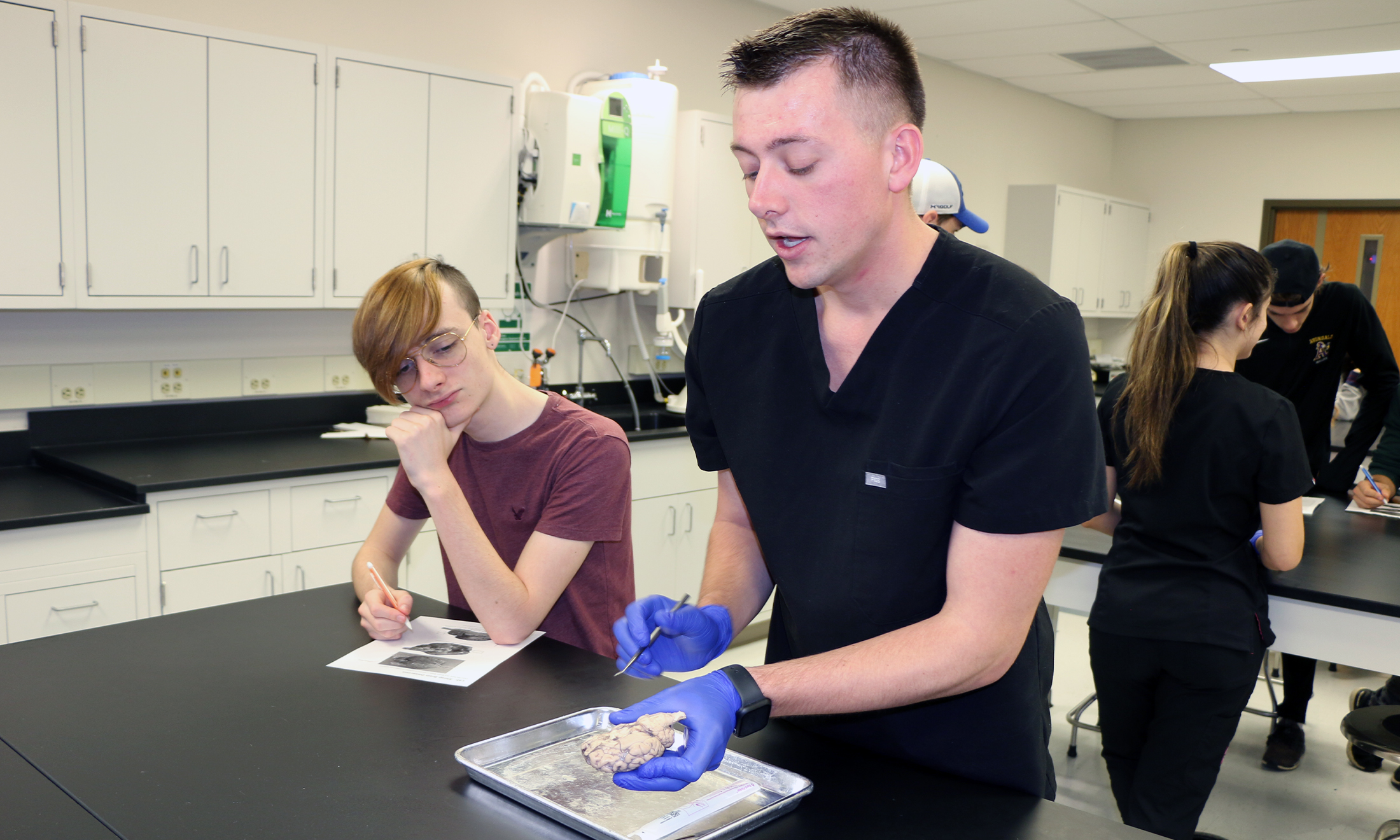
Creating a memorable event
The medical students and event organizers said they hoped to create a memorable event for students that would pique their interest.
“I hope that they’ll see this as a unique experience and hopefully, if they don’t already have an interest in medicine and anatomical sciences, then maybe they’ll develop one,” said Max Fliegner, M2, community outreach chair, SIGN.
The high schoolers said they generally found the instruction to be beneficial, such as Ria Narang, who is in her junior year.
“I liked this. I liked learning about everything, and we had a good teacher,” said Narang, who already had intentions to go into the medical field as an obstetrician gynecologist.
The experience of the event was not only beneficial for the Avondale students, but for the OUWB medical students as well.
“I really believe that there’s value in learning from teaching,” said Fliegner. “Being able to give back to the community through teaching neuroanatomy will not only help the high school students learn, but will help us develop our understanding of neuroanatomy better by getting to do this dissection.”
Joseph Solomon, M1, led the group that included Narang. He said that this event brings about the same feelings that led him into the medical field in the first place.
“Being able to be here and give them maybe a role model, or even just to help them get excited about anatomy or medicine, or give them the courage to then pursue whatever they’re passionate about— I don’t think we can really describe how big of a difference this could make in the trajectory of a young kid’s life,” said Solomon.
“This is why I went into medicine — to help people.”
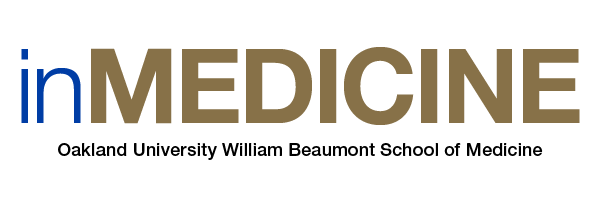
 Dec. 21, 2022
Dec. 21, 2022 By Chloe Kukuk
By Chloe Kukuk